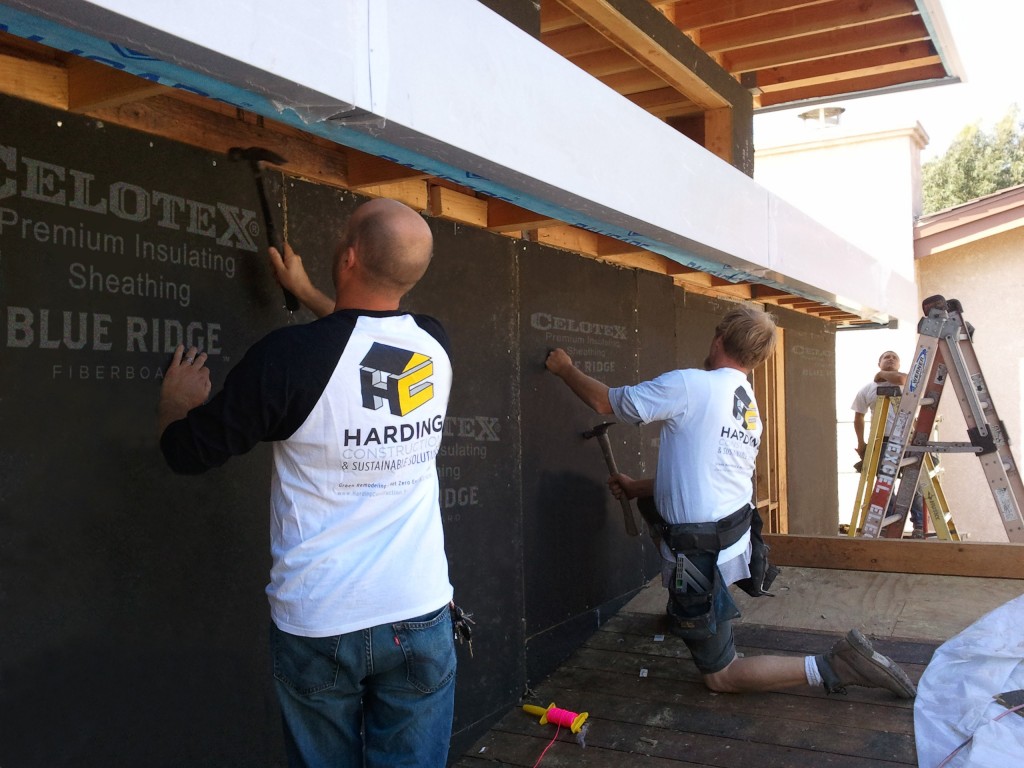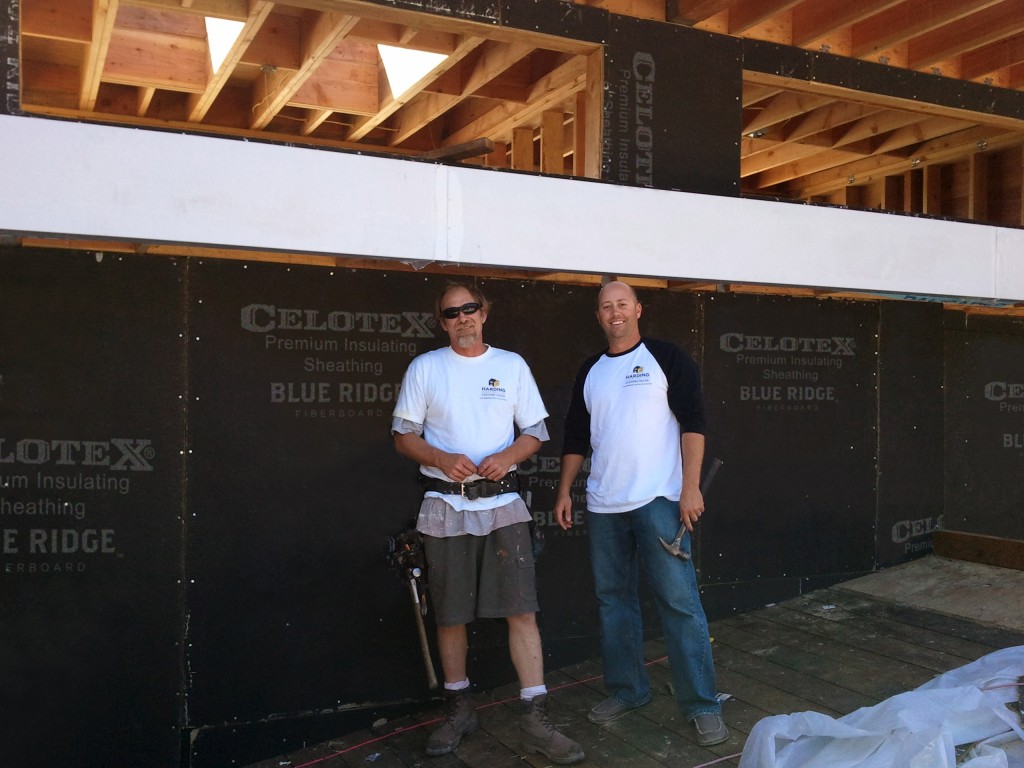The thermal envelope of our building is what separates the interior from the exterior in terms of moisture, air, heat and cold. It is critical to the overall performance of the building and getting us to our net zero goals. It also ensures that the building is comfortable and is a healthy living environment.
After sealing the mud sills and rimjoists properly to prevent air and moisture infiltration, the first step in the process was to select the type of material that would sheath the rest of the building. We had several options: plywood, oriented strand board (a.k.a. OSB), some kind of foam board (polystyrene or polyiso).
Based on the good work of buildingscience.com on their perfect wall, we had been looking for a sheathing material that would also provide us with an R-value. That R-value had to be high enough to break the dew point and therefore prevent condensation and mold forming on the inside of our walls.
Our friends at P2S Engineering calculated that for our climate zone, an R-2 exterior assembly would be more than enough. Unfortunately, standard stucco and plywood would not give us that R-value and the foams do not allow moisture to escape from the wall cavity.
Fortunately, we found Blue Ridge Fiberboard from Celotex. It is an old-school, wood fiberboard premium sheathing that has a lot of modern, eco friendly properties:
– We are using it in two overlapping layers which give us an R-2.6 insulation and a very good air barrier which will stop drafts.
– Unlike plywood or OSB, it has no added formaldehyde (a carcinogen) and has a very good perm rate. That means that if there happens to be moisture in the walls it can escapes through the wood fiberboard before mold grows – not true for plywood or other manufactured wood boards with lots of adhesives.
– The Materials Data Safety Sheets tell the story. It is pretty much wood fibers and an organic binder. When it is at the end of its useful life it turns into dirt. We are putting the scraps into our compost pile!
Our concern with the product was that when it rained it would just turn into mush. During the first downpour in October our entire building got completely soaked. Our worst fears were realized. Fortunately, the material was not damaged and dried out beautifully!
More from my site
<< Previous Post Next Post >>







